Today I’m going to show you a quick and easy memory game for practicing the doubles facts: Doubles Memory, game A15 in the Math Card Games book. It takes less than 10 minutes to play, so it’s easy to fit in between runs through the sprinkler… or between swims, if you’re lucky enough to have a pool… or after you finish your popsicles… or whatever you love doing in July. July is a great time for playing math games too!
So – what is a doubles fact? It’s any number doubled and added to itself. For example, 1 + 1 = 2 is the first of the doubles. Most children don’t have too much trouble remembering the doubles up to 5 + 5 = 10. But 6 + 6, 7 + 7, 8 + 8, and 9 + 9 can be a little more challenging.
Using the AL Abacus makes visualizing and solving the “upper” doubles so much easier. For example, try 6 + 6. Enter 6 on the first row and 6 on the second row of your abacus. Here’s what that looks like.
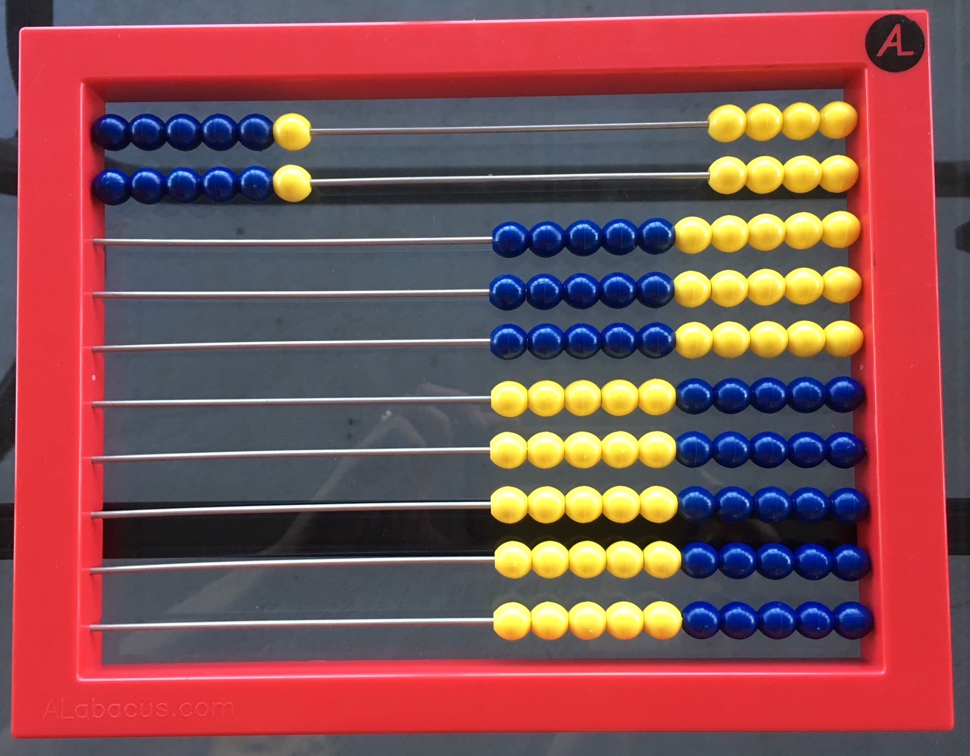
It’s easy to see that the blue beads make a group of 10, with two left over. So 6 + 6 is 10 and 2, also known as 12. This strategy works for the rest of the doubles up to 9 + 9.
I know some of you are wondering how in the world I scored a RED abacus. Well, this is an old abacus – I’ve been using RightStart since waaaaaay back. So I have an old abacus and old cards. You all can get the new ones! Anyhow, back to the game…..
Now that you know how to solve your doubles on the abacus, you’re ready to play! All you need are two each of the basic number cards from 1 to 9, and the multiplication cards with numbers 2, 4, 6, 8, 10, 12, 14, 16, and 18.
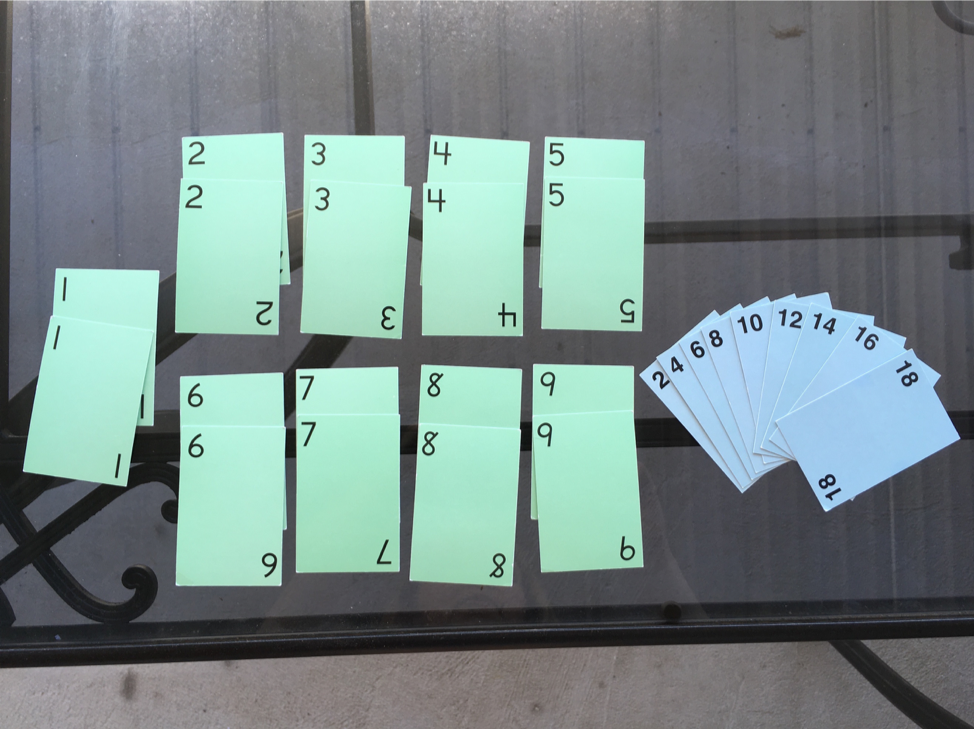
I didn’t do it this time, but sometimes in the past I’ve also thrown in two 10s from the basic number deck and a 20 from the multiplication deck. 10 + 10 = 20 is an easy fact for most children who are working on the doubles, but it doesn’t hurt to give them a little boost in confidence when they can solve that one right away!
Lay out the basic number cards, together in their double groups (meaning both 1s are in a single pile, so are both 2s, and so forth), facedown on one side of the playing area. Then lay the multiplication cards facedown next to them. Make sure they’re mixed up.
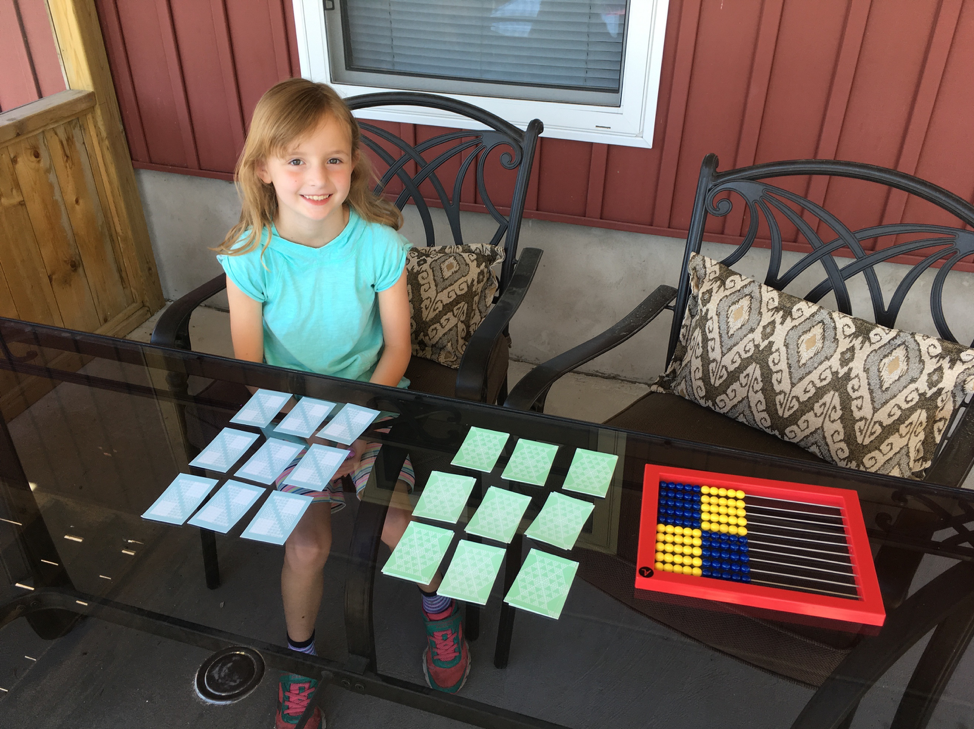
My oldest daughter, Clara, is strong in the “lower” doubles but she still needs practice in the “upper” doubles, so we often play doubles games. I always have the abacus next to her when we play, just in case she needs help figuring out the answer.
The first player turns over a set of basic number cards, says the entire fact including the sum, and then turns over a multiplication card.
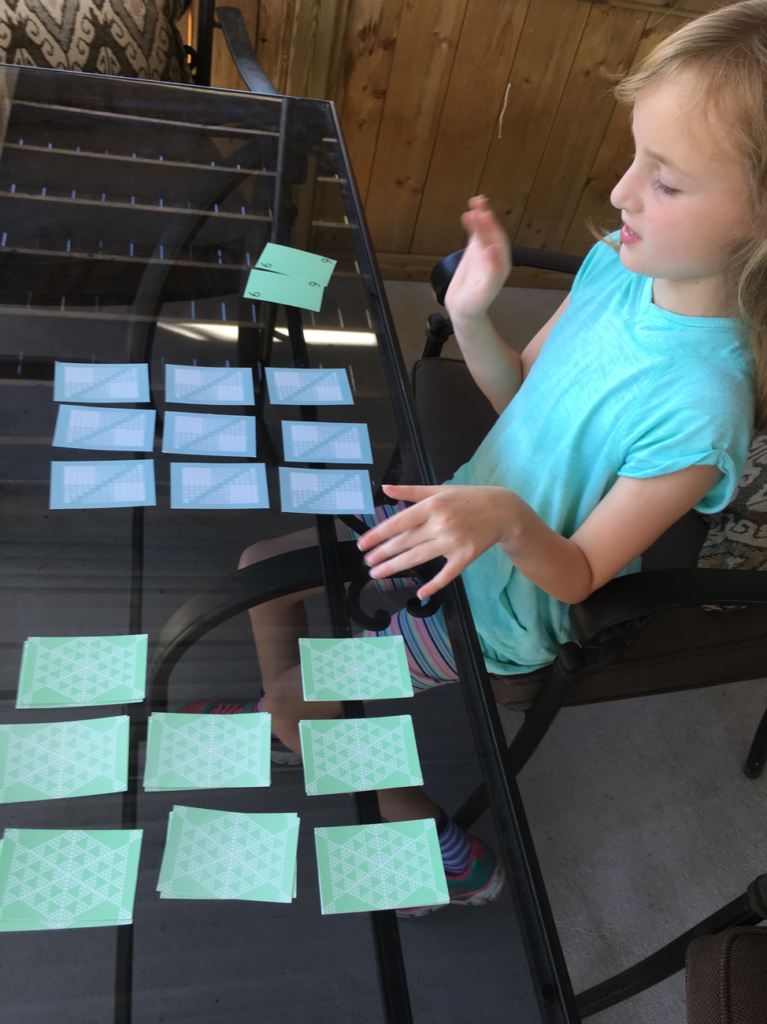
Clara turned over the 6s. She says, “Six plus six equals twelve.”
Then she tries finding 12 on the multiplication card side.
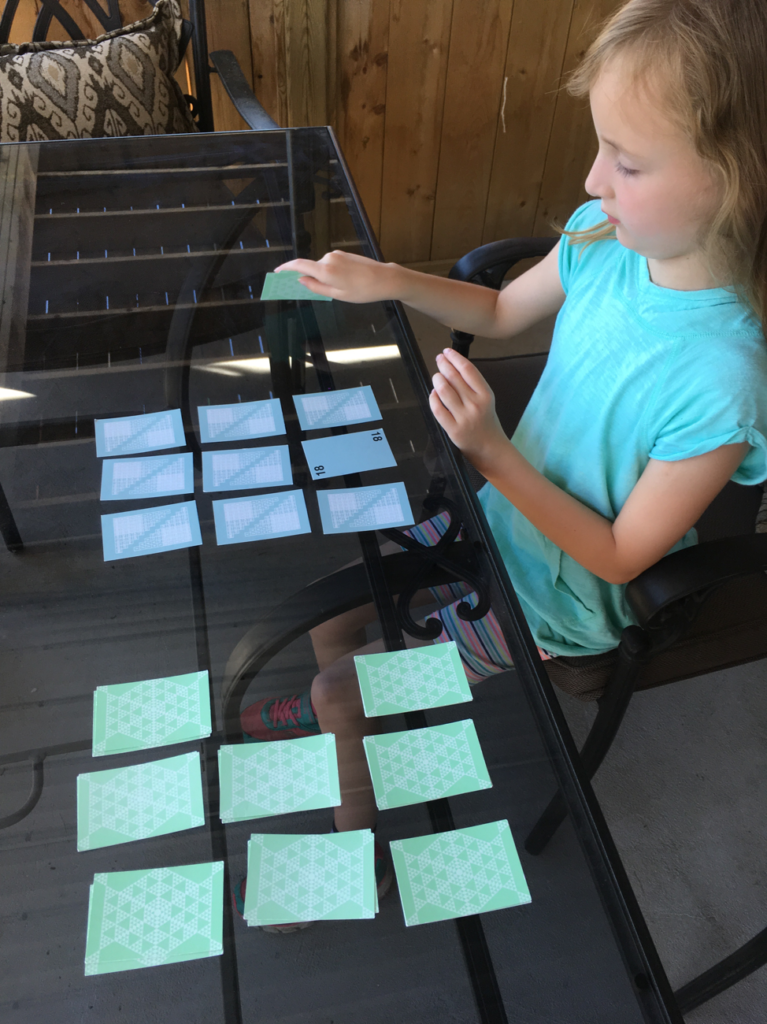
Nope, it’s an 18. She returns the 6s and the 18 back to their places, and now it’s my turn. I didn’t get a match on my turn, either, but Clara was lucky enough to find the two 9s on her next turn.
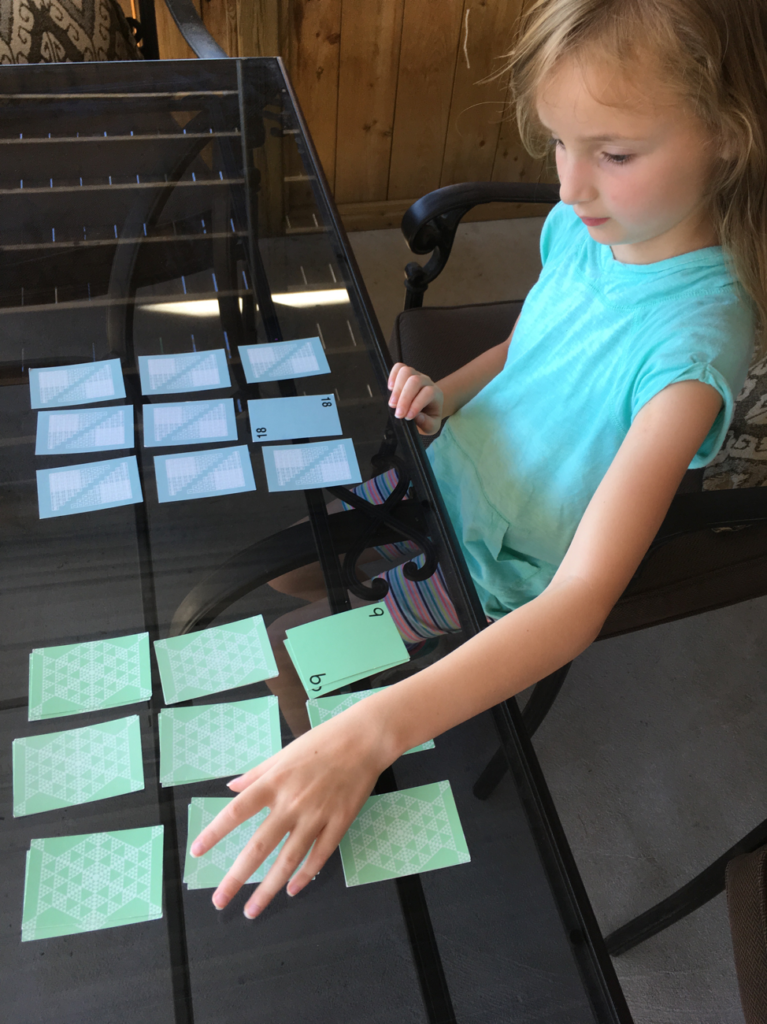
It’s a match! She wins those cards, and gets to keep them.
Keep playing until all the cards have been collected. Whoever has collected the most cards wins the game. Guess who won this game, 15 to 12?
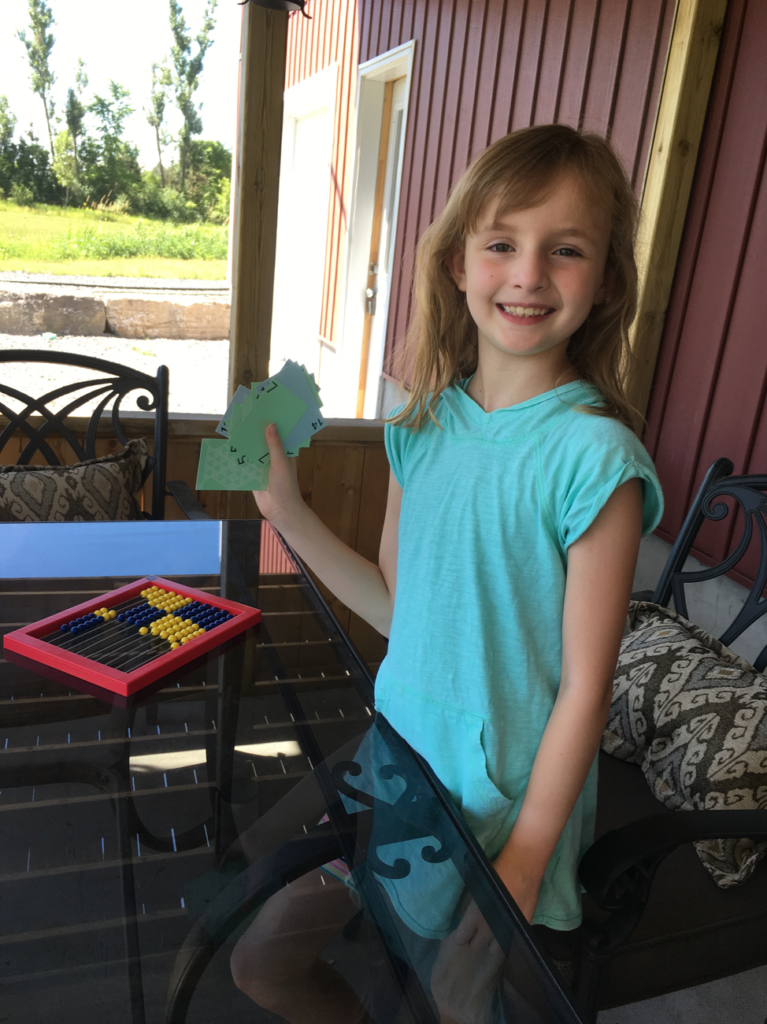
You don’t have to restrict this game to just the doubles facts. You can play with any groups of 2 number cards on one side, as long as you have cards for their sums on the other side.
However, if you happen to be playing on a glass patio table, make sure to keep an eye on any devious children who might want to sneak a peek at the cards….
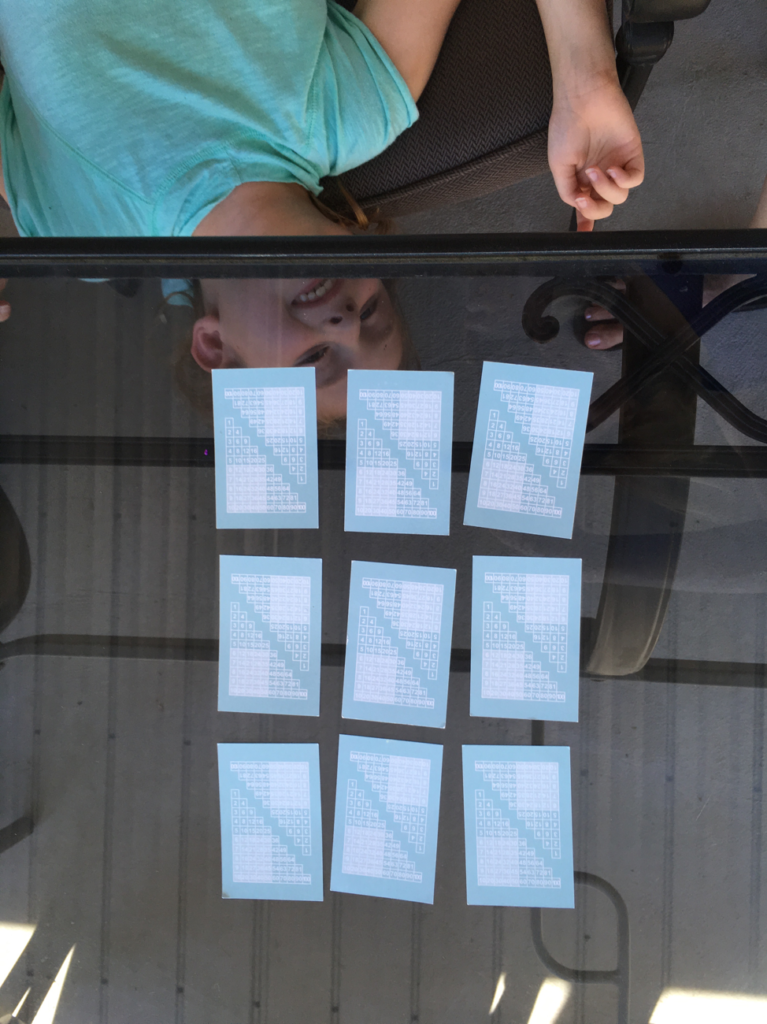
And now it’s back to the sprinkler!

Very nice! Thank you